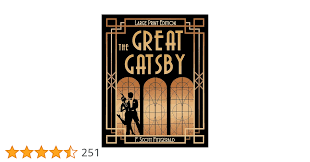
Introduction
The Great Gatsby, written by F. Scott Fitzgerald and published in 1925, remains one of the most significant works in American literature. Set against the backdrop of the Roaring Twenties, the novel explores themes of wealth, love, and the American Dream, capturing the complexities of a society in flux. Its relevance continues into today’s discussions about aspiration and identity, making it a subject of study in schools and universities around the world.
Overview of The Great Gatsby
At the heart of the narrative is the enigmatic Jay Gatsby, a wealthy man known for his lavish parties and unyielding love for Daisy Buchanan. The story is narrated by Nick Carraway, Gatsby’s neighbor and confidant, who provides a lens into the opulent yet hollow world of East Egg and West Egg. Through its vibrant characters and intricate plot, Fitzgerald critiques the notion that wealth guarantees happiness and fulfillment.
Literary Significance
The Great Gatsby was initially met with mixed reviews but has since gained acclaim as a critical examination of the American Dream. It shines a light on the divide between social classes and the moral decay hidden behind wealth. Fitzgerald’s use of symbolism, particularly the green light at the end of Daisy’s dock and the eyes of Doctor T.J. Eckleburg, invites readers to explore profound philosophical questions about ambition, love, and loss.
Current Relevance
The resurgence of interest in The Great Gatsby can be attributed to its themes resonating with modern society. As economic inequality increases, discussions about the American Dream are particularly poignant. The novel’s critical perspective encourages readers to question the values of success and materialism that persist today.
Conclusion
The continued study and adaptation of The Great Gatsby underscore its status as a cultural touchstone. With its rich narrative and deep exploration of themes, the novel invites readers to reflect on the nature of dreams, aspiration, and the consequences thereof. As we navigate changes in social and economic landscapes, the insights offered by Fitzgerald’s masterpiece remain ever significant, reminding us that the pursuit of happiness may come at a cost.



